The type of Artisans that will be available to our heroes.
- The Blacksmith - The featured Artisan from the video is the black smith. Acting as a place to repair and sell items, the black smith can also create weapons and armor for your character. He can also add sockets to any weapon or armor much like the quest reward from the
 Siege on Harrogath.
Siege on Harrogath. - The Mystic - This Artisan deals more with the magical side of crafting. The Mystic will be used to create potions, scrolls, magical weapons such as wands and staffs, spell runes, charms, and can enchant weapons and armors created by the Black Smith.
- The Jeweler - This Artisan will create gems for you. You can also use the Jeweler to combine gems to create one of a higher quality which is the only way to get the highest quality gems. There are five qualities of gem that will drop and an additional nine qualities that must be crafted. The Jeweler can also remove gems from items without destroying the gems allowing you to use a gem when first acquired and then remove it to upgrade it.
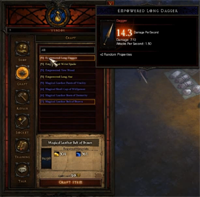

Q & A about the new caravan mechanic from the presskit:
Diablo III Caravan FAQ
Q: What is the caravan?
A: The caravan is a persistent group that follows the heroes across Sanctuary, providing a centralized hub for players to find quest givers, crafters, and other important NPCs. As your character moves through the world so too will your loyal band, setting up in specific locations to remain close by should you need them.
Q: Who are the artisans?
A: In order to access the professions in Diablo III, you'll need to gain the loyalty of various artisans through your travels in Sanctuary. The blacksmith, mystic, and jeweler will each provide unique services over the course of the game.
Q: What do the artisans offer?
A: Skilling up your artisans will unlock unique recipes, granting your character access to benefits that may not be found anywhere else in the world. The blacksmith crafts weapons and armor, and can add sockets to some items. The mystic creates scrolls, potions, magical weapons, spell runes, and charms, and can also enchant items. The jeweler crafts gems , amulets, and rings. The jeweler can also remove gems from socketed items and can combine gems to improve their quality.
Q: How do I find the artisans?
A: Finding the artisans will be part of the main quest. Each artisan has been fleshed out to include their own story and quest line.
Q: How do I use the artisans?
A: You'll collect loot as a reward for slaughtering the forces of the Burning Hells. Unwanted items can be salvaged in your inventory, converting these goods into raw crafting materials -- higher-level items are salvaged into higher-level materials. You'll then take those raw materials and hand them over to the artisans, putting them to work crafting or enchanting for you. Upon returning to the caravan after a lengthy foray, you may also find that the artisans have been hard at work plying their trade for your benefit.
Q: How do I salvage my items?
A: Players will find an item while progressing through the main quest that will allow them to convert unwanted gear into crafting materials from the inventory. This item will not take up any inventory space. This should be a more satisfying option for offloading unwanted loot than the alternative -- dropping things on the ground or making frequent trips to a vendor.
Q: Why are you including crafting professions in an action game?
A: Professions add depth to the item collection gameplay that drives the action of Diablo III. We want to provide players with an alternative way to acquire gear, potions, and other randomly found items. We also want to provide additional forms of customization for players -- adding jewels, enchants, or sockets to existing gear allows players to further tailor their characters. Many rare crafting recipes and materials are only found as world drops, enhancing the item acquisition process by increasing the diversity of items dropped by monsters.
Q: What is the caravan?
A: The caravan is a persistent group that follows the heroes across Sanctuary, providing a centralized hub for players to find quest givers, crafters, and other important NPCs. As your character moves through the world so too will your loyal band, setting up in specific locations to remain close by should you need them.
Q: Who are the artisans?
A: In order to access the professions in Diablo III, you'll need to gain the loyalty of various artisans through your travels in Sanctuary. The blacksmith, mystic, and jeweler will each provide unique services over the course of the game.
Q: What do the artisans offer?
A: Skilling up your artisans will unlock unique recipes, granting your character access to benefits that may not be found anywhere else in the world. The blacksmith crafts weapons and armor, and can add sockets to some items. The mystic creates scrolls, potions, magical weapons, spell runes, and charms, and can also enchant items. The jeweler crafts gems , amulets, and rings. The jeweler can also remove gems from socketed items and can combine gems to improve their quality.
Q: How do I find the artisans?
A: Finding the artisans will be part of the main quest. Each artisan has been fleshed out to include their own story and quest line.
Q: How do I use the artisans?
A: You'll collect loot as a reward for slaughtering the forces of the Burning Hells. Unwanted items can be salvaged in your inventory, converting these goods into raw crafting materials -- higher-level items are salvaged into higher-level materials. You'll then take those raw materials and hand them over to the artisans, putting them to work crafting or enchanting for you. Upon returning to the caravan after a lengthy foray, you may also find that the artisans have been hard at work plying their trade for your benefit.
Q: How do I salvage my items?
A: Players will find an item while progressing through the main quest that will allow them to convert unwanted gear into crafting materials from the inventory. This item will not take up any inventory space. This should be a more satisfying option for offloading unwanted loot than the alternative -- dropping things on the ground or making frequent trips to a vendor.
Q: Why are you including crafting professions in an action game?
A: Professions add depth to the item collection gameplay that drives the action of Diablo III. We want to provide players with an alternative way to acquire gear, potions, and other randomly found items. We also want to provide additional forms of customization for players -- adding jewels, enchants, or sockets to existing gear allows players to further tailor their characters. Many rare crafting recipes and materials are only found as world drops, enhancing the item acquisition process by increasing the diversity of items dropped by monsters.
Here is the transcript of the press conference including the Q & A with Jay Wilson.
Source
11.00: Hello and welcome to our coverage of Blizzard's Diablo III press conference at gamescom 2010. As well as an open question and answer session from members of the audience, it has been suggested that a new feature for the game will be unveiled as well. We'll find it when the conference begins in a few moments time.
11:01: Jay Wilson, the game director for Diablo III is welcomed on stage.
11:01: A new feature announced today will be Artisans. They are NPCs that are craftsmen to assist you throughout the game. Blacksmith, jeweller and mystic are three classes that are available. You don't start with them but they'll join you on the quest.
11:01: They'll usually request help from you, and once you gain their loyalty, they'll follow you on the quest. "We wanted this entourage of people that followed you through the world that would gather around you, like they would do for a hero."
11:02: Wilson said that it didn't feel right that the player would take their time making weapons or developing skills in towns, so these Artisan's would do that job for you.
11:03: They can act as normal vendors for buying and selling, "a basic function". They can also craft items, with blacksmiths catering for heavy duty melee weapons.
11:03: Each one will have special abilities. Blacksmiths can repair and make use of sockets. "You can add gems to any item, regardless of quality." Gem use will be more "prolific" throughout. Artisans can train throughout the game, and offer gossip as well.
11:03: Crafting wouldn't work in Diablo III than that it would in other games, needs to be less predictable. On screen a dagger is shown, which will have two random properties, and all other items will have "some element of randomness to them", but there is an element of control throughout the crafting process.
11:05: The process is fairly quick, and you can queue items to be crafted so you can go elsewhere instead of waiting.
11:05: Now shown is the Socketing system. Shields and armour can be given gems, a "pretty straightforward" process. The Salvaging system will allow users to place unwanted weapons and armour into a lot that breaks down their components into crafting items. Wilson said that they don't want players to choose hard with what they have to get rid off.
11:05: One of the bigger parts of the crafting game is finding the repcipes in the right part of the world – these too are drops with random qualities.
11:07: Other aspects have a "cool visual element", however usually crafting does not. The Artisan's will provide this visual feedback as they improve their skills.
11:08: The focus of crafting will be on combat. Artisans will have several levels of visual upgrades.
11:09: They said it doesn't feel right to not show a video of them killing something, so a quick gameplay clip using the crafted items is displayed.
11:09: The presentation part of the session ends, and it moves onto the Q&A segment.
11:10: Between Diablo II and III, why change the crafting elements and use Artisans? Wilson explains that before it was simpler before, but the Artisans provide a varied means of new abilities.
11:11: Someone asks if the game will be region locked like StarCraft has. Blizzard have yet to announce their plans.
11:12: Can multiple Artisans be used at one time? Yes – one of the goals of the system was that although Diablo is co-operative focused, they didn't want users to go to other players for their Artisans. There are cases where that is beneficial for unique recepies, but here all three Artisan types are open to you and can be fully levelled up.
11:13: The most important question is the release date, an audience member says. Wilson responds that it is "done when it's done".
11:14: Do the Artisans give you quest after you gain them? Currently no, since pulling them back in the story doesn't feel right yet, and while it's possible for them to integrate them into the story, they don't want to do that currently.
11:14: Will there be any special bonuses if you put gems in a special order? Wilson says that is a "really cool idea" and that he'll write it down and discuss it with the design team.
11:15: Someone asks a question regarding the security and accounts, and how they can teach users to be sensible. Wilson says that security is very important to Blizzard and that they have a whole decision dedicated to the issue. "We have a lot of people on it, that's how we keep it secure... we put a lot of energy into security." The audience member says whether how users can be more competent in their own user account safety. Wilson says not yet for Diablo III but there are plenty of authenticators out there.
11:18: The Artisans are asked to be explained in more detail. The Mystic focuses on crafting magic items – wands, staff and some pieces of armour – and can be used to add enhancements. They are found in the same way that recipes are found, in the world, and as the Artisans level up they'll encounter new ones along the way. The Mysic can also add elements to items, much like Kane did in the original.
11:18: The Jeweller can recover gems from items without destroying them. Wilson said that they like how gems in II can be combined together, but it made people keep their gems and not use them in the fear that they would lose them. Here, it makes it possible for people to experiment. There are five levels of gems that drop, but there are fourteen qualities total which are obtained through combining in the right way. "To get the higher numbers you have to get pretty ridiculous."
11:21: Someone asks about the levelling system for the Artisans. As you play through the game, higher levels are required for higher recipes. As you progress the items Artisan's need become harder to find. The levelling controls the quality of the items that need to be combined. They aim that they want Salvaging and Combining a stress-free process, especially for high level items.
11:23: The art-style is brought up. Wilson says they had "vastly" more positive feedback than negative, and they went onto forums to look at the reaction. "The internet is not usually an area for positive area. People are usually negative, let me say." He adds that 90% of users found the art style attractive, so they knew they were going into the right direction.
11:24: Someone asks how much they need to Salvage, especially since it's not a "loot whore" game. It is quite prevalent, and the benefit is that instead of selling items for low amounts of gold, the broken down components will be of more use and can be stacked in higher numbers in the inventory.
11:26: When asked about how much is done, development wise, Wilson responds, "No, it's done when it's done." He adds that he doesn't speak in percentages, and that it is hard for a Blizzard game to be translated in those terms – they wait until they think things are really done. Development is a process of iteration, and that it is difficult to tell people how that works.
11:27: Someone asks whether you can use enhancements, socketing and so forth to one item, in II it was only one each. The answer is yes, you can, and then they asked why they did it just once since it was "cool" to do.
11:28: For naming items, Wilson said it was a "can of worms" and that people add naughty words to them, and find easy ways around it.
11:29: Someone asks about Hardcore modes. The requirements are uncertain, but it will be in the final game. In Battle.Net it might add trinkets and visual effects to profiles. "We do want you to show up prominently in Battle.Net if you play Hardcore mode.
11:30: It is clarified that Artisans do not follow you on the battlefield, but come with you from town to town along with "a whole other cast of characters" that Blizzard are not talking about today.
11:32: There won't be a town portal system, as they are a "horrible" combat exploits and design clashes. Instead they are using way points.
11:33: For Diablo II fans, what is the incentive for them to move to the third games? "I think there is an enormous number of reasons." Graphics, itemisation, combat model has been deepened, new content and classes to play. "I do love Diablo II, but I have played it quite a bit.
11:35: In terms of consoles, "we don't explore them right now." Diablo III is one of the better games to translate to consoles due to controls, but it is not being explored. However, they will "absolutely" do console development at some point.
11:36: They are looking at systems for selling and trading between players, and "hardcore Battle.Net development" will see that come to life, but a shared stash looks most viable. It was added that chat might also be considered, something that was missing from II.
11:37: For Artisans, they can be fully developed with no consequences. Special abilities are not exclusive, so you can eventually have fully development Artisans with all their abilities, provided time is put into it.
11:38: They are thinking of visual effects for their carts, such as if the player concentrates on axes or swords, they could be represented visually.
11:39: Items can only be enchanted once. They can be rewritten, but only one at a time.
11:40: For stashing, there won't be unlimited space. "That is basically a storage limitation, but it will be large. Ridiculously large." He said II's was "teeny tiny" and that he hated that.
11:41: Artisan's are unique characters that have backgrounds, so there won't be one of each. It is reiterated that there will be no exclusive features.
11:42: There will be set items in Diablo III, but they are in design right now. Some should be able to be crafted. One question Wilson is often asked is where items will be at the end of the game. An end game character will have a mixture of rare items, legendary items, and a few crafted items. "Our goal is that there is a valid reason for every item type, and that one will not dominate."
11:43: In II the level and quality restricts the number of sockets, and that will be the same in III. The design system behind it is similar to II.
11:43: Someone asks about really hard quests like those in II. "We have events in the game that are challenging outside of the bosses." They probably won't difficult on standard difficulties, but on harder ones "they will hurt you and make you cry".
11:44: The enhancement and socketing of items will require gold, and so gold will be of more importance this time around. Wilson says that the economy in II wasn't the greatest, and so by having almost everything require gold to use will help that.
11:45: The final question: the multiplayer of Diablo II allowed users to collect ears and whether they would return. "How could we not do that?" He jokes that it is a top of the box bullet point, but says that it is doubtful.
11:47: And with that, the press conference draws to a close.
Image Gallery:
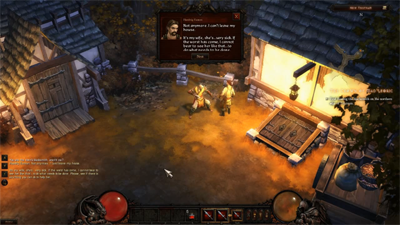 |
|---|
| First encounter with the Blacksmith |
 |
| Crafting UI |
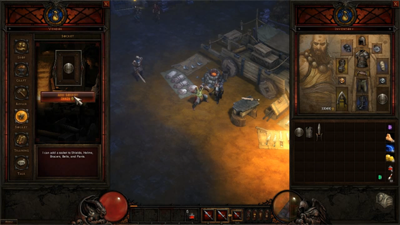 |
| Adding sockets to an item |
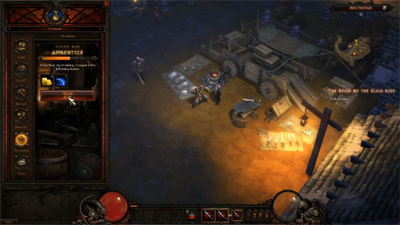 |
| Training the Blacksmith |
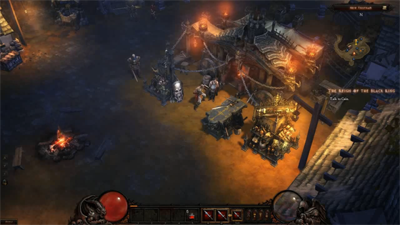 |
| Fully upgraded Blacksmith |
 |
| Artifact UI for salvaging items |
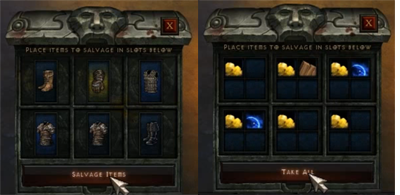 |
| Salvaged items |
You can also download the presskit form the 2010 gamsecom conference here which includes screenshots, high quality announcement video and other goodies. Special thanks to pixartist for the link.
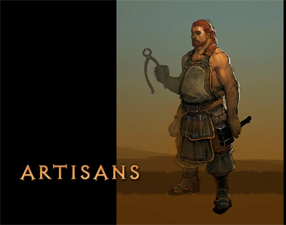
-
View User Profile
-
Send Message
Posted Aug 18, 2010edit: UH OH, NEWS TEAM DISAGREEMENT!!!
From the press conference, not their exact words but reworded by a gaming blog.
-
View User Profile
-
Send Message
Posted Aug 18, 2010-
View User Profile
-
Send Message
Posted Aug 18, 2010http://www.diablofan...idea-gold-sink/
Maybe I am right about the fifth class as well.
-
View User Profile
-
Send Message
Posted Aug 18, 2010"The Crown of Mad Leoric."
"Reign of the Black King."
Just something to note :D.
edit: Ophion, it looks like there is a key to do that.
In the vid he dragged and dropped the first 3 or so, then just clicked the remainder and they were added to the box. I'm guessing it's a shift click, or something along those lines.
-
View User Profile
-
Send Message
Posted Aug 18, 2010-
View User Profile
-
Send Message
Posted Aug 18, 2010Also, the person above me is a troll.
-
View User Profile
-
Send Message
Posted Aug 18, 2010-
View User Profile
-
Send Message
Posted Aug 18, 2010-
View User Profile
-
Send Message
Posted Aug 18, 2010I think this is one thing Diablo definitely needed, it'll bring alot more customization to the game. Also to the people that are saying it looks like WoW.. you do know blacksmiths existed in real life right?.. That they aren't really inspiring themselves from WoW but more of the real world lol
-
View User Profile
-
Send Message
Posted Aug 18, 20101. First of all, we'll finally be real heores. I mean, how can you call yourself a hero if you don't have helpers and sidekicks? And we'll get three artisans, probably Cain and some other characters they're not talking about. That in itself is great.
2. I just like the new system. At first, I thought it seemed really similar to what Hellgate London had, and that system was just downright confusing. But there's one thing Blizzard knows how to do, it's having their games make sense and be easy to grasp, so I have no worries that the system won't be easy to handle.
3. Upgrading stuff is great, especially when you can collect everything! Collectibles are always the best when you can get them all yourself, and not when you have to choose some and leave some others out (like Pokemon Red/Blue etc.)
Finally some real and great news
-
View User Profile
-
Send Message
Posted Aug 18, 2010"hey, I just leveled up and my friggin hut exploded!! I have a mansion now"
kind of sad town portals are out
edit: did you noticed the monk is in fighting stand inside town?? it looks like he's about to kill that artisan
edit2: the cursor... it's an arrow
hope they change that :/
-
View User Profile
-
Send Message
Posted Aug 18, 2010-
View User Profile
-
Send Message
Posted Aug 18, 2010-
View User Profile
-
Send Message
Posted Aug 18, 2010-
View User Profile
-
Send Message
Posted Aug 18, 2010Thankfully, Blizzard picked up the slack here. I can't wait to see what's in store for us in the upcoming weeks.
-
View User Profile
-
Send Message
Posted Aug 18, 2010It will add some welcome depth to the gameplay, as well as give you something to work at other than the mindless grind of boss runs.
Color me excited.
-
View User Profile
-
Send Message
Posted Aug 18, 2010-
View User Profile
-
Send Message
Posted Aug 18, 20101) Less selling, which is less gold gained,
2) Spending on crafting, which pulls more gold out of the economy.
It's a clever answer! I'm diggin' it.
-
View User Profile
-
Send Message
Posted Aug 18, 2010-
View User Profile
-
Send Message
Posted Aug 18, 2010I'm sure you can find dropped items that will be equal to crafting gear. More variety of ways to obtain gear is never a bad thing in a game like Diablo.